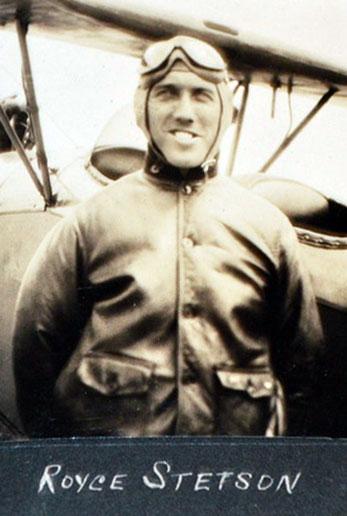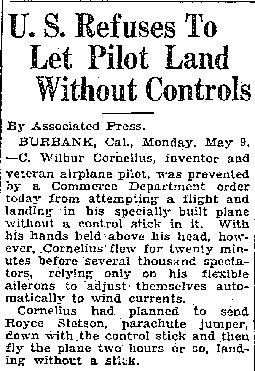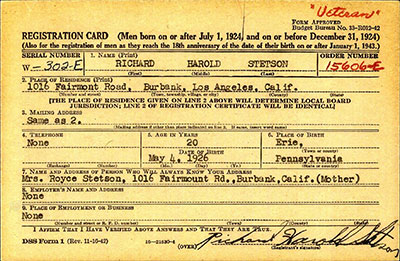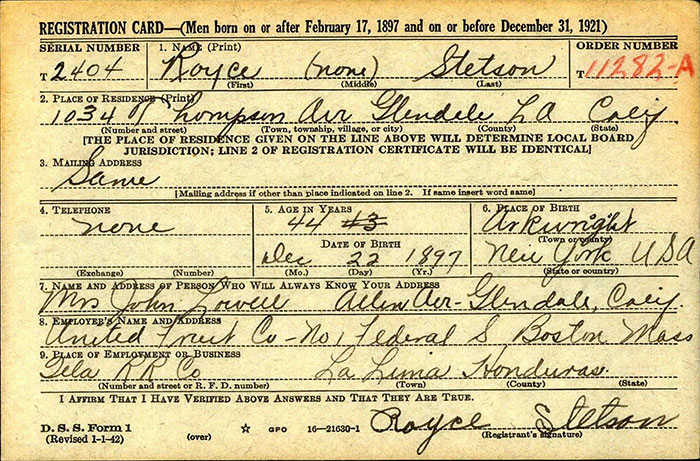THANK YOU!
YOUR PURCHASE OF THESE BOOKS SUPPORTS THE WEB SITES THAT BRING TO YOU THE HISTORY BEHIND OLD AIRFIELD REGISTERS
Your copy of the Davis-Monthan Airfield Register with all the pilots' signatures and helpful cross-references to pilots and their aircraft is available at the link. 375 pages with black & white photographs and extensive tables
---o0o---
The Congress of Ghosts (available as eBook) is an anniversary celebration for 2010. It is an historical biography, that celebrates the 5th year online of www.dmairfield.org and the 10th year of effort on the project dedicated to analyze and exhibit the history embodied in the Register of the Davis-Monthan Airfield, Tucson, AZ. This book includes over thirty people, aircraft and events that swirled through Tucson between 1925 and 1936. It includes across 277 pages previously unpublished photographs and texts, and facsimiles of personal letters, diaries and military orders. Order your copy at the link.
---o0o---
Military Aircraft of the Davis Monthan Register, 1925-1936 is available at the link. This book describes and illustrates with black & white photographs the majority of military aircraft that landed at the Davis-Monthan Airfield between 1925 and 1936. The book includes biographies of some of the pilots who flew the aircraft to Tucson as well as extensive listings of all the pilots and airplanes. Use this FORM to order a copy signed by the author, while supplies last.
---o0o---
Art Goebel's Own Story by Art Goebel (edited by G.W. Hyatt) is written in language that expands for us his life as a Golden Age aviation entrepreneur, who used his aviation exploits to build a business around his passion. Available as a free download at the link.
---o0o---
Winners' Viewpoints: The Great 1927 Trans-Pacific Dole Race (available as eBook) is available at the link. This book describes and illustrates with black & white photographs the majority of military aircraft that landed at the Davis-Monthan Airfield between 1925 and 1936. The book includes biographies of some of the pilots who flew the aircraft to Tucson as well as extensive listings of all the pilots and airplanes. Use this FORM to order a copy signed by the author, while supplies last.
---o0o---
Clover Field: The first Century of Aviation in the Golden State (available in paperback) With the 100th anniversary in 2017 of the use of Clover Field as a place to land aircraft in Santa Monica, this book celebrates that use by exploring some of the people and aircraft that made the airport great. 281 pages, black & white photographs.
---o0o---
Thanks to Guest Editor Bob Woodling for help researching this page.
---o0o---
YOU CAN HELP
I'm looking for information and photographs of pilot Stetson and his airplanes to include on this page. If you have some you'd like to share, please click this FORM to contact me.
---o0o---
SPONSORED LINKS
PLEASE HELP KEEP THESE WEB SITES ONLINE
FOR YOUR CONVENIENCE
You may NOW donate via PAYPAL by clicking the "Donate" icon below and using your credit card. You may use your card or your PAYPAL account. You are not required to have a PAYPAL account to donate.
Or you can scan the QR code below with your mobile device and be linked to your PayPal app.
 |
|---|
Either way, when your donation clears the PAYPAL system, a certified receipt from Delta Mike Airfield, Inc. will be emailed to you for your tax purposes.
---o0o---
ROYCE JAY STETSON, Sr.
 |
Stetson was born December 22, 1897 in New York. The 1900 U.S. Census, his first, placed him at age 2 living with his father, Jay (age 40) and mother, Minnie (34) in Ripley, NY. His father's occupation was "Farmer." The 1910 Census found him in the same place at age 12.
By the 1920 Census, the family had moved to 13 Bothel St., North East Borough, PA. Stetson's father was now 60 years old and had taken a job as a watchman on the railroad. Their address today is across the street from railroad tracks and is a modest, two-storey clapboard home with open porches on both floors. Stetson at age 22 was employed as a "Garage Man."
The 1920-1930 was a busy decade for Stetson. I found no synthesis of his activities, but scraps divined from ancestry.com and elsewhere documented the birth of at least two children fathered by him. The first was Kenneth Jay Stetson (1923-2002). His mother was Estella (Stella) Sellen (1904-1968).
At some point they separated and Stetson had another son, Richard (May 4, 1926-September 13, 1995) with Marion Loeivel [sic]. I found no records to support Stetson's marriage to either of these women (but see the 1930 Census data, below).
 |
In 1928, Stetson and fellow Register pilot Gordon Sackett, left, leased a pasture in Santa Barbara on Hollister Avenue and established the beginning of the furture Santa Barbara Airport. They gave flying lessons there. The airplane they stand next to appears to be a Swallow TP with OX engine.
On Monday, September 23, 1929 at 11:00AM Stetson made his first landing at Santa Monica. He flew the Swallow TP he identified as NC8750 (S/N 150, with an OX engine). He arrived solo from Hawthorne, CA and listed his destination back to Hawthorne. He cited the airplane owner as A. Patterson. He left us no reason for his flight.
In 1930, the Census reported Stetson married to an unidentified woman (Marion?) and living as a lodger at 335 Colorado, Glendale, CA. At 29 years old, his occupation was coded as "Pilot" with an "Airplane Company." Stella, on the other hand, showed up in the 1930 Census living in Titusville, PA with an uncle and with son Kenneth (7). Curiously, she reported her marital status as "Widowed," but her name was recorded as Stetson.
It was just after the 1930 Census, on Tuesday, February 4, 1930 at 12:30PM, that Stetson made his second visit to Clover Field. He flew the same Swallow TP, NC8750,. He again arrived solo from Hawthorne, CA and listed his destination back to Hawthorne. He cited the airplane owner this time as T. J. Kelly. Again, he left us no reason for his flight.
 |
The following year, Royce Jay Stetson, Jr. was born (1931-1999). It is not clear if his mother was the unidentified woman (Marion?) to whom Stetson was married in the 1930 Census.
His third landing at Santa Monica was on Tuesday, July 3, 1931 at 3:40PM. This time he flew the Fleet 2 he identified as NC610M (S/N 186). He arrived solo from Mines Field and identified his destination as United Airport. He identified the owner of the airplane as K15 Flying Club.
His final landing was on Thursday, August 20, 1931 at 11:00AM. He was solo, again flying NC610M. He arrived at Clover Field from United Airport. Again, he cited no reason for his visit. However, the Fleet was a common training aircraft of the period, and he was probably on a training flight.
Near the time of his final visit to Santa Monica, Stetson competed in the 1931 National Air Races, allegedly carrying race number 91. I found no information in this REFERENCE that documents whether he won or placed in any event that year. He did sign a postal cachet dated September 1, which is exhibited above, complete with winged aviator stamps and printed poster art on the obverse.
 |
 |
In 1932, he was active as a parachutist. In May, he made the news with fellow Register pilot George Cornelius, who had patented a unique aircraft design described at his link. Their collaboration was described in the article from the Seattle Daily Times of May 5, 1932, left.
Also, Stetson experimented with lighting, including flares, searchlights and lights fastened to his body, to illuminate his parachute jumps. The Lowell Sun (MA), May 2, 1932 documented his work, right.
 |
Two months later, perhaps due to his visual sensations and perceptions while parachuting in the dark, he theorized that things fell faster through the air at night than in the daytime. He tested his hare-brained theory by parachuting from an airplane with his lights on, and having his speed measured, as discussed in the article from Popular Science Monthly, July 1932, left. The photos appear to be slightly different between the articles.
 |
The 1936 Glendale, CA city directory placed him and Marion living at 116 Linden Avenue. He was identified as an "Aviator." California voter registration records identified him as a Republican.
The San Bernardino County Sun, September 2, 1938 reported a tragedy that befell the Stetson family, left. I found record of Richard born in 1926. Information at ancestry.com suggested that Richard changed his last name at some point (after 1944? see below), but kept his first. A month later the same newspaper reported a lawsuit for negligence brought by the deceased boy's parents against the Stetsons for $25,298.
I found no 1940 Census data for Stetson. The 1940 Census found Stella (25) remarried and with Kenneth (now 17) living with her and her new husband (John Beck, 1892-1975) in Erie, PA, where they continued to live for the next 15 years or more.
 |
In a separate 1940 Census, Stetson sons Earl Leonard (15) and Richard (13) were found living as "Wards" at 1901 Winona Avenue, Burbank, CA with the family of Clyde De Monbrun and wife Louise. I don't know why the two boys were placed in the care of the De Monbruns; it could have been a result of Leonard's shooting of his friend. The De Monbruns operated the Burbank Military Academy for boys. I assume that the Stetson boys attended the academy. Richard's draft registration, ca. 1944, is at right. See his father's registration, below.
A reason Royce Stetson was not in the 1940 Census might be that he was resident in Honduras. An article in the United Aircraft "Beehive" ca. 1944 stated the following.
| "Flying in a country where there are fewer than a hundred airplanes, where the rainfall each year is nineteen feet, and where in many places modern man has never set foot may seem little less than fantastic, yet this is what pilot Royce Stetson has been doing in the heart of Central America for nine years. During the last four, Stetson has been transporting officials of the United Fruit Company back and forth by air across this still mysterious and largely impassable country. Each year he has flown "up" to the United States in one of United Fruit's airplanes to have it overhauled. On his latest visit, of only a few weeks ago, Stetson and mechanic Tony Cirello set an unofficial speed record of 11 hours for the flight "up" from La Lima, Honduras to Camden, New Jersey. When the two set down United Fruit's Lockheed 12 airplane for overhauling at Rentschler Field, they were full of praise for the sturdy reliability of Pratt & Whitney engines under unfavorable tropical flying conditions. Referring to the Wasp Junior engines used on United's planes, Stetson said, 'We've had no trouble at all with these engines, even over 1,000-hour periods.'" |
The article suggested that he flew for the company since about 1935, which overlaps with his residence in Glendale and the shooting tragedy, above. And another article from the Valley Morning Star (Harlingen, TX), July 10, 1937, below, places him working for United Fruit.
United Fruit Plane Lands In Valley |
Despite his back and forth to Honduras, he maintained his residence in Glendale as evidenced by his WWII draft registration card dated August 13, 1942, below. The back of this card, which posted the date, also recorded his weight and height, 165 pounds and 5'8".
 |
Late during WWII, Stetson worked as a test pilot for Lockheed. The photograph below shows Stetson (R) with a group of other test pilots. The airplane behind them was a P-38.
 |
I have no information about Stetson's work or family life after WWII. If you can help fill in the blanks, please let me KNOW.
Royce Stetson flew West on February 5, 1971 from Los Angeles, CA. He was 73 years old. He flew with Transport pilot certificate T6938.
His legacy at the Santa Barbara Municipal Airport is at the link. A history of the airport is at the link. Ancestors West, a publication of the Santa Barbara Historical Society, published the following in their August 2013 volume.
In 1928 local aviators Royce Stetson, Gordon Sackett, and Ray Romero were given the chance to develop their own airfield which they carved out of a pasture at the corner of Fairview and Hollister Avenues. The field was located at the edge of a “swamp” (Goleta Slough) and next to a slaughterhouse and hog farm. Soon they built a dirt runway and a hangar in hopes of operating a flying school to cover their costs. Unfortunately, their hopes were not realized. However, as with many things, timing is everything. The same week in 1931 that the Santa Barbara City Council essentially closed Casa Loma Field, Century Pacific Airlines started daily air service between Los Angeles and San Francisco with the Goleta airfield as a stop. Los Angeles airplane manufacturing company, General Western Aero Corporation, opened a short-lived airplane manufacturing operation at the Goleta field and by 1936 United Airlines offered passenger service to Los Angeles utilizing part of the flight school offices as a passenger terminal. In 1940 the Santa Barbara Chamber of Commerce conducted a site study for a municipal airport. The study concluded that the Goleta airfield was the best location and, in February 1941, Santa Barbara citizens voted for a $149,000 bond issue to purchase land in Goleta to build a new airport. Funding supplied through federal grants allowed airport construction to begin at the end of May. Nine months later the new airport was ready to open. During this time United Airlines leased land from the city to build a new passenger terminal on the south side of the airport. News Press Publisher Thomas Storke, an influential aviation advocate, noted in a May 1941 editorial headline, “The Flying 40’s’ Are Promising Great Success for City Airport” citing the insurance industry’s determination that commercial aviation was a “good” insurance risk. Another promising development was Assistant Secretary of Commerce Robert Hinckley’s strong conviction that expenditures on civil airports were justified for national protection and Hinckley personally attached a military importance to the building of the airport in Santa Barbara. |
---o0o---
SPONSORED LINKS
THIS PAGE UPLOADED: 04/24/18 REVISED: 06/09/18, 06/14/19, 08/21/18
